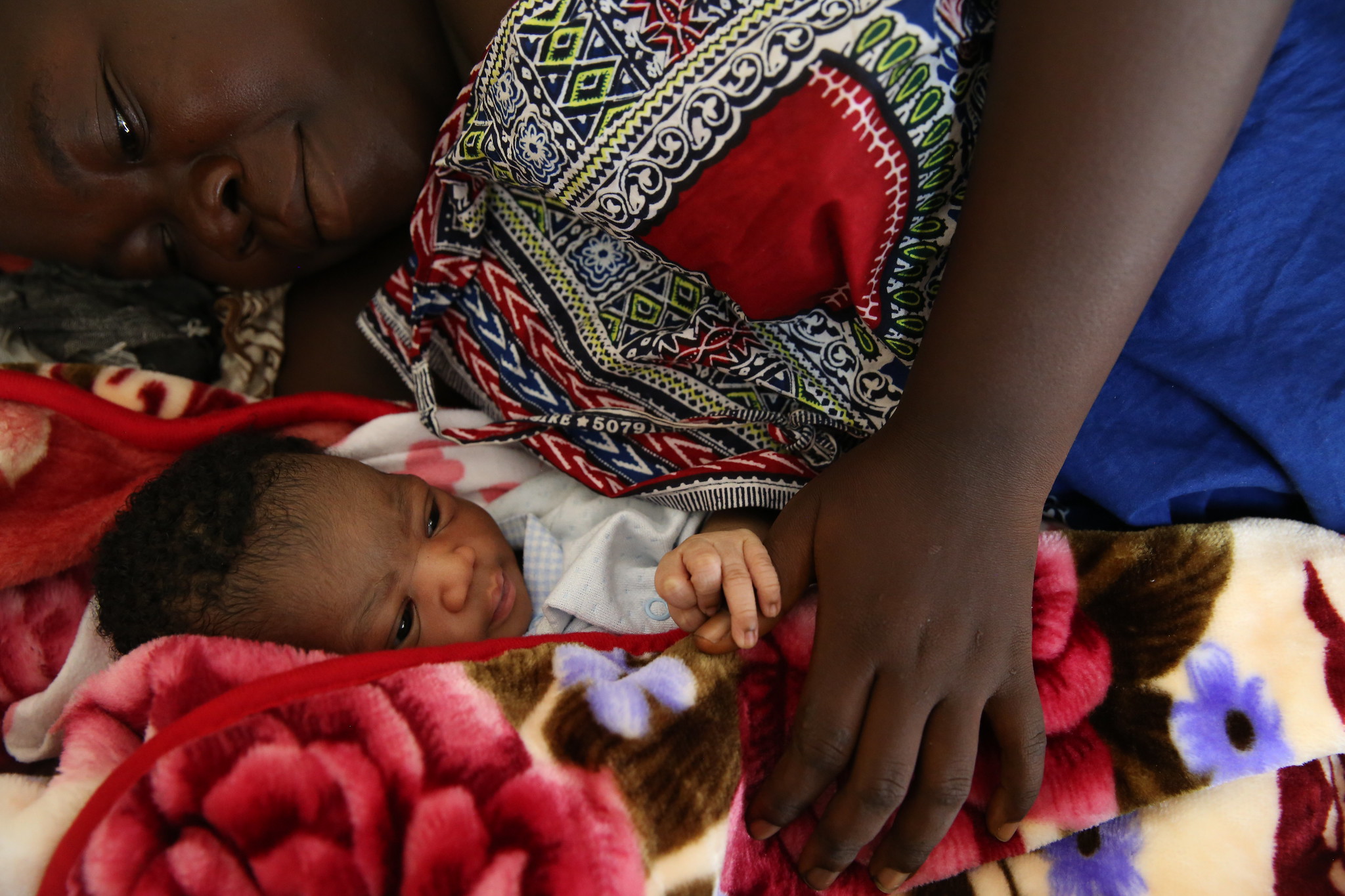Safety of artemisinin-based therapies for treatment of malaria in the first trimester: IPD meta-analysis update
Safety of artemisinin-based therapies for treatment of malaria in the first trimester: IPD meta-analysis update
The study group aims to expand the evidence base on the safety of artemisinin-based therapies in the first trimester of pregnancy by consolidating and analysing data to inform malaria treatment decisions.

The study group on the Safety of Artemisinin-based Therapies in the First Trimester was formed in early 2021 to establish the evidence base and safety profile of artemisinin-based combination therapies (ACTs) during early pregnancy. Building on a previous meta-analysis by Dellicour et al, the group conducted an individual patient data (IPD) meta-analysis to quantify the level of risk that could be excluded for associations between first-trimester artemisinin exposure and adverse pregnancy outcomes. The findings of this meta-analysis, presented at a WHO meeting and subsequently published in The Lancet in 2023, informed the revision of WHO guidelines for malaria case management in the first trimester of pregnancy.
The current study group continues this work and aims to perform an updated IPD meta-analysis incorporating data available since 2022 to provide the most comprehensive evidence synthesis to date. Eligible studies are identified from search using the PICOS (patient, intervention, comparator, outcome, and study design) framework and by contacting malaria in pregnancy researchers for any new or unpublished data. The invitation to share individual patient data will be sent to principal investigators of eligible studies identified for inclusion. For the studies that were part of the previous project described above, investigators will be invited to join the current study group using an opt-out approach. Data collation will close in Q1 2026.
Malaria during pregnancy poses significant risks to maternal, foetal, and neonatal health (1-5). Infection in the first trimester is particularly detrimental, as it increases the likelihood of foetal loss through miscarriage or stillbirth (1, 2, 5). Malaria also affects maternal health by causing anaemia and increasing the risk of hypertensive disorders, particularly in early gestational age (5-7). The vulnerability is compounded by the fact that intermittent preventive treatment (IPTp) begins only in the second trimester (8), leaving early pregnancies unprotected against malaria. This underscores the need for ensuring prompt, safe and effective treatment in the first trimester to safeguard both mother and child (3).
Artemisinin-based combination therapies (ACTs) have been recommended by WHO as the first-line treatment of uncomplicated falciparum malaria for second and third trimesters pregnant women since 2006 (9). Despite being well-tolerated and highly effective, ACTs had not been recommended for the first trimester until 2022 (8).
Recent individual participant data (IPD) meta-analysis demonstrated that first-trimester treatment with artemisinin derivatives is as safe and possibly more effective than quinine-based treatments, which was the standard of care for malaria treatment in the first trimester (2). However, sub‑group analysis could be conducted only for the most widely used ACT, artemether‑lumefantrine (AL), as the limited number of documented exposures prevented such analyses for other ACTs (2). These findings led to WHO's 2023 guideline revision recommending AL for first-trimester malaria treatment (8). The guidelines further indicated that other ACTs, including artesunate-amodiaquine, artesunate-mefloquine, and dihydroartemisinin-piperaquine, may be considered in settings where AL cannot be used, although evidence remains insufficient to endorse their routine use in early pregnancy (8). Artesunate-pyronaridine, recently approved for uncomplicated malaria in the general population, was excluded from recommendations due to lack of documented first-trimester exposure at the time of the review (8) .
Several studies collecting first-trimester ACT exposure data have been completed since 2022. This study group proposes to conduct an updated IPD meta-analysis to synthesise evidence from these newly completed studies and to evaluate a wider range of ACTs than previously possible, using standardised exposure definitions, outcome measures, and analytical methods. This approach will enable more precise risk estimates and assessment of safety profiles for all ACTs.
The overall aim of the study group is to update the IPD meta-analysis on the effects of first-trimester artemisinin exposure on pregnancy loss (miscarriage and stillbirth) and major congenital anomalies. Particularly, the IPD meta-analysis will characterise the safety profiles of ACTs other than artemether-lumefantrine (AL) and also strengthen the evidence base supporting AL use in the first trimester.
The primary objective is to compare the incidence of miscarriage, stillbirth, and major congenital anomalies of women exposed in the first trimester to non-AL ACTs, and women exposed to AL or quinine in the same period of pregnancy.
The non-AL ACTs to be assessed for safety include, dihydroartemisinin-piperaquine, artesunate-pyronaridine, artesunate-amodiaquine and artesunate-mefloquine.
The meta-analysis will include studies with prospective follow-up of pregnant women, such as, randomized control trials (RCTs), interventional and observational cohort studies with internal comparison groups (PROSPERO Protocol number: CRD42024565638.
The inclusion criteria are following:
(1) the study reported artemisinin derivative or quinine use for treating malaria in the first trimester of pregnancy (2-14 gestational weeks from LMP date)
(2) women were enrolled before pregnancy outcome was known (i.e., prospective follow-up of pregnancy), and
(3) the study included internal comparison groups with either quinine treatment or no antimalarial treatment in the first trimester.
The following studies will not be included:
(4) case series, retrospective or case-control studies, or cross-sectional surveys;
(5) reported only second and third trimester artemisinin exposures;
(6) did not report pregnancy outcomes.
The data required from eligible studies include:
- Participant’s demographics (e.g. maternal age, gravidity)
- Gestational age at start of observation, at time of exposure (if any) and at end of follow up
- Antimalarial exposures (including name of antimalarial, date/gestational week at exposure, malaria confirmation)
Delivery information or data on termination of pregnancy, especially in reference to the following outcomes: foetal and neonatal outcomes (i.e. miscarriage, stillbirth, major congenital anomalies)
Authors of the eligible studies will be contacted for sharing IPD through [WWARN, IDDO] Data Repository, a secure web-based platform developed by IDDO. Once uploaded into the WWARN Data Repository, data sets will be standardised according to the WWARN Clinical Data Management and Statistical Plan, and all primary data sets will be pooled into a single database of quality-assured individual patient data.
A detailed statistical analysis plan will be developed prior to commencing the analysis and will be shared with all investigators.
The Study Group includes investigators who contribute relevant data sets to the pooled analysis. The core analysis and writing committee will consist of: Aninda Nishat Moitry, Stephanie Dellicour, Philippe Guérin, James Watson, Makoto Saito and any trial investigators who wish to be part of the writing and analysis group.
Data sets remain the property of the contributing investigators/institutions. The output analysis will be published in an open access journal, and authorship will be aligned with the ICMJE guidelines and the WWARN publication policy.
For further information, please email: aninda.moitry@wwarn.org
1. Saito M, Briand V, Min AM, McGready R. Deleterious effects of malaria in pregnancy on the developing fetus: a review on prevention and treatment with antimalarial drugs. Lancet Child Adolesc Health. 2020;4(10):761-74.
2. Saito M, McGready R, Tinto H, Rouamba T, Mosha D, Rulisa S, et al. Pregnancy outcomes after first-trimester treatment with artemisinin derivatives versus non-artemisinin antimalarials: a systematic review and individual patient data meta-analysis. Lancet. 2023;401(10371):118-30.
3. Dellicour S, Sevene E, McGready R, Tinto H, Mosha D, Manyando C, et al. First-trimester artemisinin derivatives and quinine treatments and the risk of adverse pregnancy outcomes in Africa and Asia: A meta-analysis of observational studies. PLoS Medicine. 2017;14(5):e1002290.
4. Moore KA, Simpson JA, Scoullar MJL, McGready R, FJI F. Quantification of the association between malaria in pregnancy and stillbirth: a systematic review and meta-analysis. Lancet Glob Health. 2017;5.
5. Rogerson SJ, Desai M, Mayor A, Sicuri E, Taylor SM, van Eijk AM. Burden, pathology, and costs of malaria in pregnancy: new developments for an old problem. Lancet Infect Dis. 2018;18(4):e107-e18.
6. Harrington W, Moore K, Min A, Gilder M, Tun N, Paw M, et al. Falciparum but not vivax malaria increases the risk of hypertensive disorders of pregnancy in women followed prospectively from the first trimester. BMC medicine. 2021;19:1-11.
7. Accrombessi M, Yovo E, Fievet N, Cottrell G, Agbota G, Gartner A, et al. Effects of malaria in the first trimester of pregnancy on poor maternal and birth outcomes in Benin. Clinical Infectious Diseases. 2019;69(8):1385-93.
8. WHO. WHO guidelines for malaria, 16 October 2023. Geneva: World Health Organization; 2023 (WHO/UCN/GMP/
2023.01 Rev.1). License: CC BY-NC-SA 3.0 IGO 2023.
9. World Health Organization. Guidelines for the treatment of malaria: World Health Organization; 2006.





